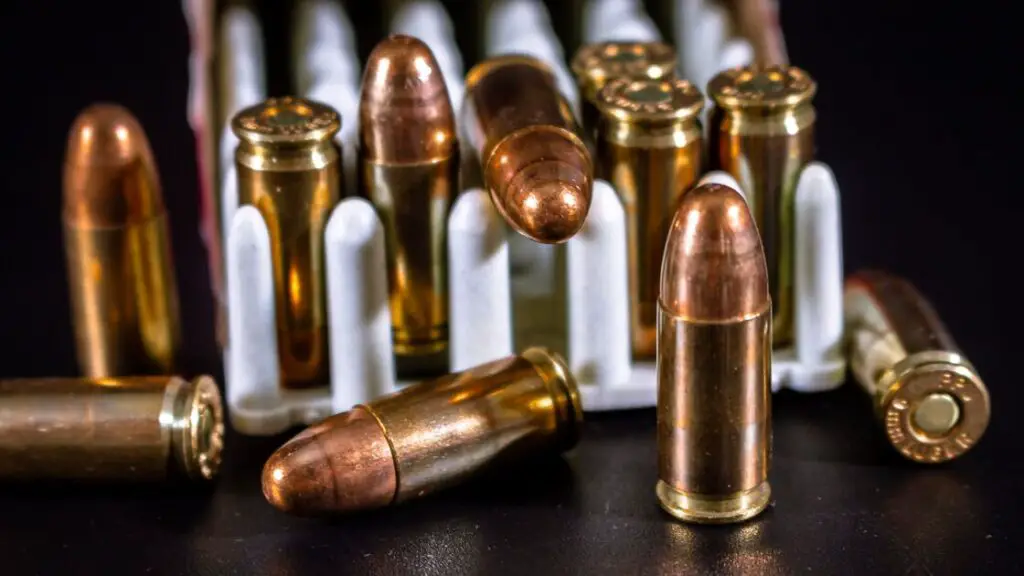Every day, lots of waste is being generated on this earth. With the rise of awareness on waste segregation, most people are separating waste and supporting recycling methods. However, when it comes to scrap ammunition, most of us don’t know the exact recycling process.
If you are a gun owner, it’s like having most of the scrap ammo. Instead of throwing these ammo in regular recycling bins, it is necessary to know the safety precautions to take before giving ammunition to recycling. In this blog, let us dive deeply into the details of recycling scrap ammo.
What is Scrap Ammo?
Ammo is a short form of “ammunition,” which refers to the components or physical objects used in firearms. The type and design of the ammunition vary from firearm to firearm according to its design and function.
For example, if you want ammunition for hunting purposes, it will be of a different design than for self-defense purposes. The performance qualities, propellant, and bullet design of various ammunition types might vary to meet their intended uses.
The whole unit of ammunition, sometimes known as a “round” or “cartridge,” is made up of several critical components such as casings, bullets, propellant, and primer.
Scrap ammo is ammunition that is defective, damaged, or unwanted.
Why is Recycling Scrap Ammo Necessary?
- Scrap ammo, when thrown into normal garbage, can be dangerous for the workers. When waste goes into garbage vans, it gets pressed down with high pressure to create more volume on the truck. Scrap ammo contains hazardous materials such as lead and sulfur. When these element gets pressed down with high pressures, there are higher chances of having an explosion, irrespective of the presence of fire. That’s why recycling scrap ammo is necessary, as the recycling methods follow proper safety precautions.
- Recycling scrap ammo is also necessary to prevent soil and water pollution. This also indirectly stops us from causing harm to local wildlife. When you go on a safari, you want to see animals healthy in their environment, right? Recycling your scrap ammo is one step to keeping your environment healthy.
- Scrap ammo, when thrown into dustbins or compost bins, causes a pileup of landfills with chemicals. When you recycle ammo, you can stop these dangerous landfills.
Safety Precautions to Follow Before Giving Your Scrap Ammo For Recycling
- Never place used and unfired ammo together. This can be a serious issue because mixing both of these ammunitions is quite dangerous.
- Never dispose of lead bullets in the ground. This is mainly because these bullets contain lead, which has the potential to harm groundwater by seeping into it.
- When working with ammo, always use protective gear. Wear safety eyewear and put on gloves to prevent coming into contact with the potentially dangerous object.
- Keep ammunition out of the reach of children and pets, and always keep it in an appropriate container to avoid leaks of any kind.
- When attempting to wash the casing, do not strike it in any way. Always handle ammunition with care, as there is a great risk of explosion.
- Don’t ever smoke close to the ammunition. The ammo contains explosive components, which could catch fire when smoking.
- After you’ve finished washing it, properly clear up any remaining residue. Remove all unnecessary stuff.
- Carefully wash your hands and any other body parts that came into touch with the ammo using soap as well as sanitizers.
How to Recycle Scrap Ammo?
Be sure to follow the above safety precautions before you start recycling scrap ammo. In general, recycling scrap ammo has the following steps.
1. Collect the ammunition
Gather the ammo you want to recycle. These ammo can be anything from casings to gunpowder. Make sure to exclude any damaged ammo.
2. Deactivate primers
If you are handling cases, deactivate primers. You can use a decapping tool or remove it by disassembling the round and removing the primer manually.
3. Sort out the Components
Sort out the components into different types. For example, casing, bullets, and any other recyclable materials should be kept aside. Separate nonrecyclable materials aside.
4. Clean the Components
Cleans all the components carefully. Wear gloves for safety. Use a tumbler or any other cleaning method suitable for ammo.
5. Check Quality
Check the Quality of the components. If the bullets have corrosion, then they may not be suitable for loading into the guns. Keep aside such components for other recycling processes.
6. Recover Lead
This should be done only if you have the required equipment and knowledge of ammo. Lead from bullets can be recovered, but it requires special tools and safety precautions. Avoid this step if you don’t have tools or much knowledge. If you have reload knowledge, you can also reload them to reuse.
7. Take Them to Recycle Centers
When these steps are done, you can take them to recycling facilities. Gather the components separately and contact nearby recycling centers.
Where Should I Take Scrap Ammo For Recycling?
When you have scrap ammo and want to recycle it, search “Ammunition disposal near me” in Google, and you will find places where the scrap ammo is accepted. The following locations will accept the ammo for recycling. Make sure to call them and enquire when they will accept the ammo.
1. Police Stations
Contact the police department in your community to find out if they take old ammunition. You should never bring a firearm into a police station with ammo in it. Rather, keep the gun safely stored in your vehicle and tell the station officer that you have extra ammunition that you are willing to give up.
2. Local Gun Ranges
To dispose of your ammunition, you can go to the gun ranges in your area. You can contact the gun range in advance to find out which day is designated for this purpose, as most gun ranges contain certain days for this.
3. Recycling Centers
There are several recycling centers that accept hazardous waste materials, and you may check with your local ones to see whether they do as well. This hazardous material can be included, from batteries to ammo. They provide certain days entirely for these hazardous substances. Make sure to enquire them about your trash ammo and note down the day on which they accept scrap ammo.
Benefits of Recycling Scrap Ammo
There are many benefits of Recycling Scrap ammo. Some of these are as follows.
1. Conservation of Resources
Through recycling scrap ammo, we can conserve Energy and other resources. Scrap ammo contains metals like brass and lead. By recycling them, we can reduce the need to extract more metals. This reduces human efforts and indirectly saves renewable energy resources.
2. Waste Reduction
Recycling scrap ammo significantly reduces the amount of waste. Proper disposal of scrap ammo is somewhat challenging, recycling them will be a responsible and eco-friendly option.
3. Saves Energy
The Energy required to extract metals like lead and brass is more than you expect. Recycling the scrap ammo will reduce this effort and save Energy for future usage.
4. Save Money
You can earn or save money by recycling scrap ammo. This is beneficial for those who have personal guns. You can get Money when you give ammunition for recycling.
5. Environmental Benefits
Scrap ammunition, when thrown into garbage, will lead to soil and water pollution. When you give them to recycling, it will reduce these pollution and benefit the environment.
6. Historical value
Some casings and bullets may have historical value! Depending on the type of firearm, some scrap ammo is cleaned and stored as a part of historical artifacts.
7. Safety
Unused ammo can be risky for living beings. Recycling them properly gives the assurance of their safety and reduces risks.
Conclusion
If you have scrap ammo with you, contact nearby recycling facilities or police stations. Remember, following safety precautions is a must. In addition to encouraging ethical and sustainable behavior, we can lessen the adverse effects that scrap ammunition has on the environment by appropriately recycling it.
Frequently Asked Questions
Q1. Can live ammo be recycled?
Recycling live ammo is dangerous and should be avoided. For safe live ammo disposal techniques, it is best to speak with professionals or law authorities.
Q2. Are there any legal restrictions on ammo recycling?
As local laws can differ, be sure to check them. Ammunition recycling may require permission in some places or adherence to regulations.
Q3. Is it profitable to recycle ammunition?
Ammunition recycling is profitable depending on a number of variables, including how much and what kind of materials you have on hand and the prices at which scrap metal is currently being sold.
Q4. Where can I safely recycle my scrap ammunition?
You can take the ammo to the nearby hazardous waste recycling facilities to properly recycle it.




